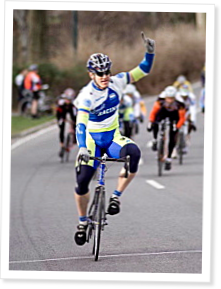
Former pro cyclist Jeff King recounts the spread of cycling’s drug culture from Europe to North America.
The first thing I noticed in Belgium was the speed.
We were racing at a pace at least five miles per hour faster than anything I had ever done in North America and not taking the usual rests that would allow me to survive three-hour races like this. I was getting my legs ripped off.
It was 1998, and if you wanted to race bikes seriously, you raced in Europe. The European circuit was to bike racing what the National Football League is to football and the National Hockey League is to hockey. It was where the greatest athletes in the sport from around the world competed for the biggest prizes, the most money and the greatest prestige. Europe was where the stakes were the highest, and I had decided to go all in.
It was my first race and I was already thinking, “Man, these guys are fit.”
We were blasting through 80 miles of narrow brick streets at speeds approaching 30 miles per hour. This was a nothing race, a low-level kermesse, which is a popular Flemish-style bicycle race held on the same day as the town festival. Before the race, gamblers poked and prodded us like racehorses before placing their bets. There’s no start money at a kermesse; if you don’t win, you don’t get paid. You eat what you kill.
At the time, I laughed at how seedy cycling was at this level. But I was naïve; I had no idea how just how squalid the sport actually was.
In the late 1990s, there was a drug renaissance going on in European biking, where the drugs and doping technology were ahead of the cyclists. But we pedaled hard, and it didn’t take long for us to catch up.
What the sport of cycling is today was being developed in labs and refined on the roads of Europe in 1998.